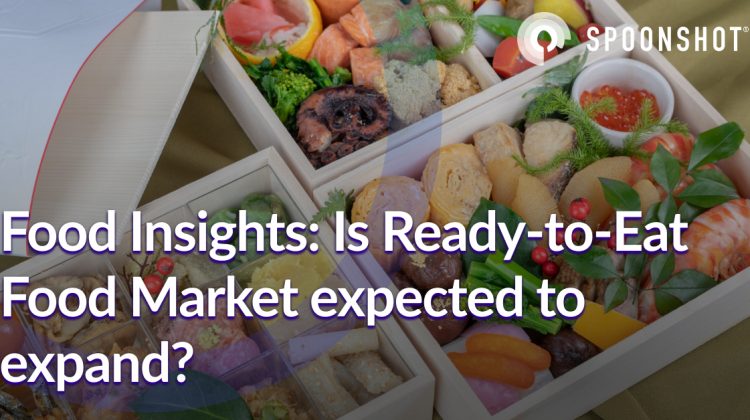
The global market of ready-to-eat food products is expected to grow at a CAGR of 7.2% to US$195.3 billion by 2026. Food market research attributes this to an increasing number of people working longer hours. On-the-go consumption is an excellent option in these situations. Improved packaging techniques and advanced microwave technology have led to increased consumption of ready-to-eat meals in developed countries. This, in turn, has led to increased global demand.
The pandemic saw a surge in demand in the ready-to-eat market. However, there is growing awareness of additives and preservatives. Food insights demonstrate that there is a marked shift towards healthier eating habits.
This means there is plenty of scope for food and beverage innovation in this sector. The pandemic caused restaurants to innovate by understanding the immediate needs of consumers. The lockdown has inspired people to experiment with food, flavors, and cuisines. This has led to searches for exotic dishes. For instance, restaurants developed and sold pre-prepared base gravies, marinades, dressings, and more. These have significantly reduced the burden on home cooks.
Additionally, this was a healthier option as these mixes contained little to no preservatives and were made using fresh produce. This allowed consumers to cook a variety of dishes in a shorter time.
Must Read: Food and Beverage Industry Trends
Key Market Trends
The increasing demand for frozen pizza and handheld breakfast is causing a surge in the market for ready-to-eat meals. These foods are typically marketed as low-cost products with quality and freshness. This has led to these meals gaining immense popularity in several food outlets in North America, leading to brands positioning themselves strategically to drive growth.
Food insights show that consumers today want food to be healthy, tasty, and convenient. People want food that is easy to prepare without it being full of additives and chemicals.
This has also caused food and beverage innovation in a somewhat surprising area: Soup. Knorr has developed a new range of 100% natural ambient soups packaged in glass bottles.
With growing awareness and demand for foods based on dietary preferences, it is essential to cater to many consumers. This means cyclical product innovation and market research. This has led to a surge of DIY meal kits catering to a wide range of preferences. Sunbasket, for instance, offers DIY meal kits with vegan, paleo, diabetes-friendly, gluten-free, and Mediterranean options.
Whitworths, in late 2020, introduced ready-to-eat plant-based meals for vegan consumers. Each pack contains 20g of plant-based protein sources from various plants such as pinto beans, quinoa, lentils, and wheat berries.
Various brands have also launched fitness meals over the years. These typically consist of low-calorie, low-sodium, preservative-free ready-to-eat meals made using fresh ingredients.
Also Read: Food Trends & Predictions 2022
What’s the Key to Success in the Ready-to-Eat Food Industry?
The key to success in the ready-to-eat market is evolving with customer expectations and demands. Research shows that 55% of shoppers are eating at home more often since the pandemic began.
Research shows that approximately 36% of adults in the United States reported eating ready-to-eat meals in 2020. Millennials used to convenience are willing to spend on ready-to-eat meals and are one of the primary drivers of growth in this segment. However, with growing awareness and focus on various dietary trends and restrictions, it is imperative to cater to multiple demographics.
An India-based online grocery store chain, Grofers, reported a sale surge of 170% in the ready-to-eat category, 31% in the ready-made meals and mixes category, and 41% in the frozen food category in 2020.
Food insights show that the lockdown-led rise in home cooking has generated ample opportunity for growth in the ready-to-eat sector. The demand for healthy, fresh food has led the ready-to-eat market to expand to include DIY meal kits.
Grocers now have a heightened opportunity to meet customers’ needs through their ready-to-eat options in-store and online. This could be done both a la carte or as a whole meal. For instance, roast chicken, salad, and potatoes could be combined or sold separately, leaving the choice to the customer. This could also extend to dessert options.
These include all the ingredients for the dish freshly packed or frozen with the recipe card. This is healthier and allows the meal to be cooked fresh, based on specifications.
Impact of COVID-19 on Ready-to-Eat Food Market
National lockdowns and border restrictions enforced by various governments during the COVID-19 pandemic led to supply chains being completely disrupted. This drastically affected the manufacturing and distribution of various products.
The pandemic, however, led to a positive impact on the ready-to-eat food market as customers and retailers alike began stockpiling goods with extended shelf lives.
Studies show an increased demand for products, such as batters, instant mixes, desserts, and frozen snacks, was growing. The retail demand for frozen snacks rose from 25% (pre-Covid) to 30%.
With rising awareness of the impact of food on immunity, customers began buying ready-to-eat food products with higher nutritional profiles to boost immunity.
This led to ready-to-eat brands focussing on wholesome and nourishing products supplemented with proteins and other nutrients. However, the lockdown led to a severe labor shortage leading to large brands producing ready-to-eat meals with a minimum workforce, while smaller brands faced challenges.
Must Read: 8 Biggest Food Trends & Predictions for 2021
Want more information on ready-to-eat products in the US, UK & AU markets? Create a free account for Spoonshot and study the entire product landscape that includes startups and established companies.



Leave a Reply